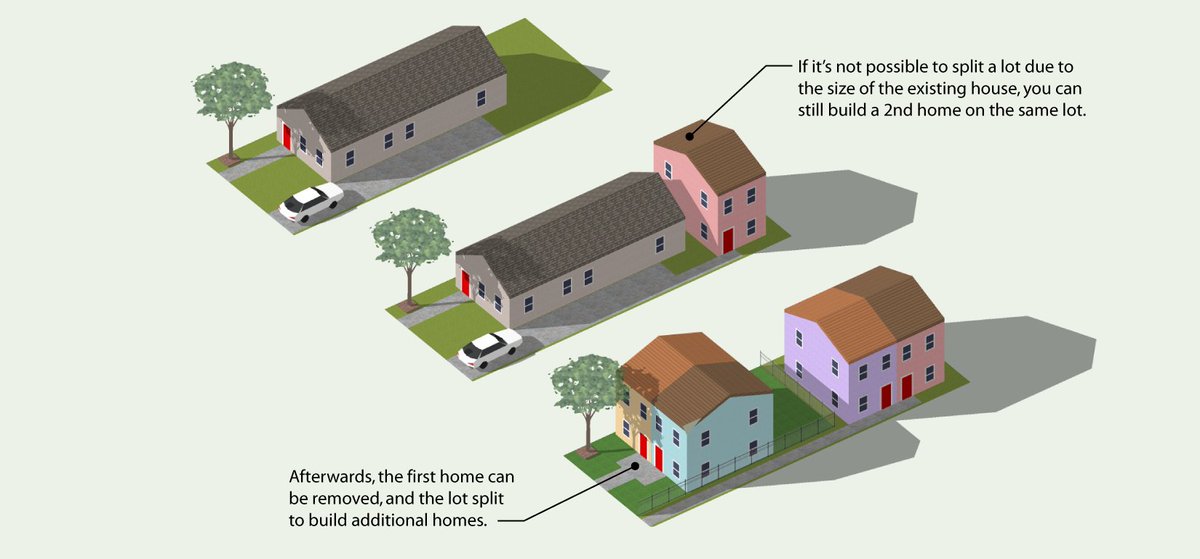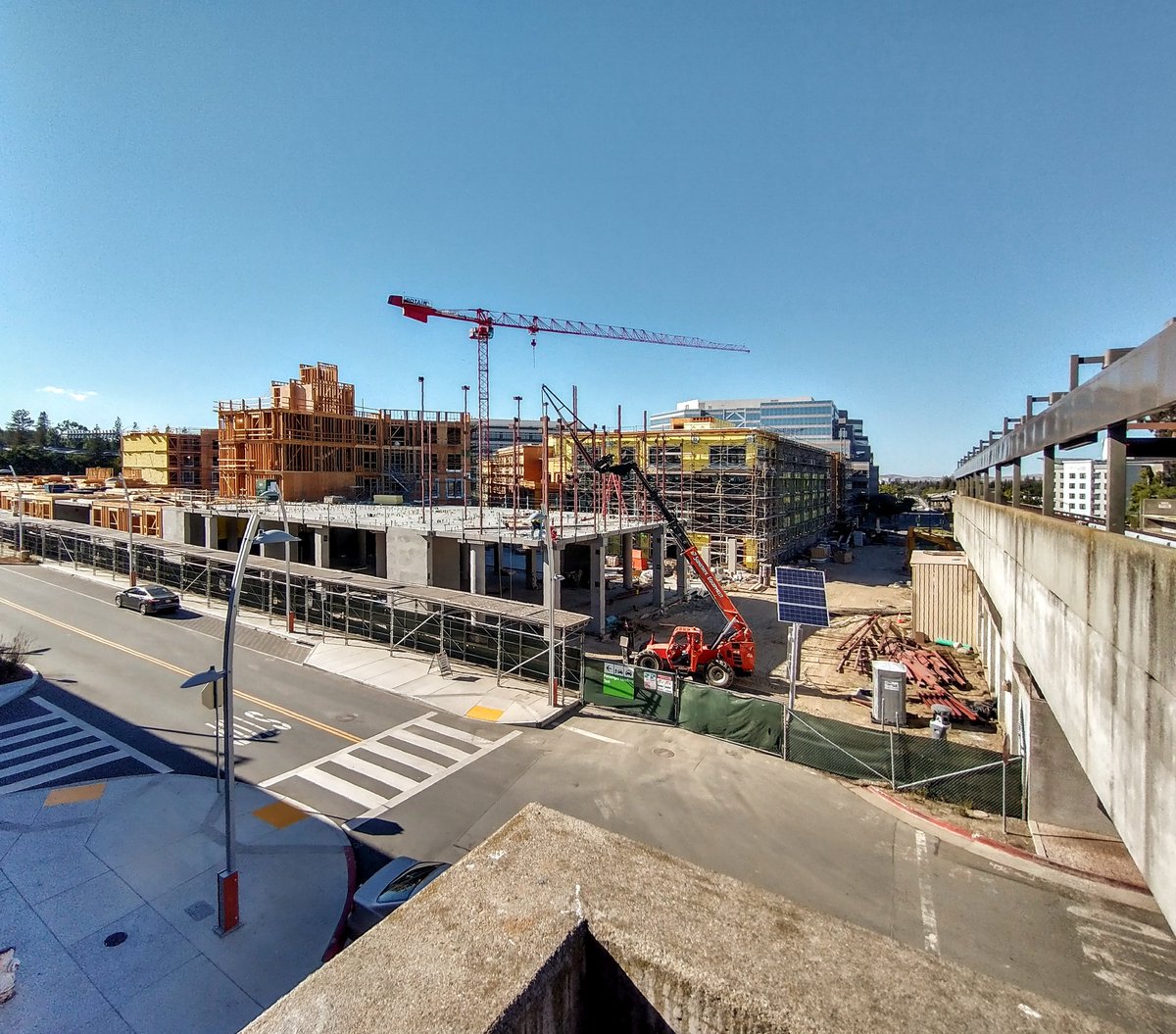
CA Senate Bill 9 allows up to 4 homes in most single-family zones, regardless of local zoning. You can use #SB9 to split your lot, add a 2nd home to a lot, or both (split lot & have 2 homes on each lot for total of 4).
Here's a how-to guide & thread:
sites.google.com/view/alfredtwu… 1/
Here's a how-to guide & thread:
sites.google.com/view/alfredtwu… 1/

#SB9 takes effect on 1/1/2022. Want to use it to build homes? First, check if your lot is eligible:
- SB9 only applies to lots that are zoned for 1 house. If your lot is zoned for more than 1 home, use #AB803
- SB9 only applies to lots that are zoned for 1 house. If your lot is zoned for more than 1 home, use #AB803
https://twitter.com/alfred_twu/status/14336676865384366202/
More #SB9 eligibility requirements
- Located in existing urbanized area or urban cluster (this includes most suburbs)
- Not farmland, wetlands, conservation land, habitat for protected species, etc.
- Not landmark or in historic zone
3/
- Located in existing urbanized area or urban cluster (this includes most suburbs)
- Not farmland, wetlands, conservation land, habitat for protected species, etc.
- Not landmark or in historic zone
3/
More #SB9 eligibility requirements
- Not on a hazardous waste site, earthquake fault zone, 100-year floodplain or floodway.
- Cannot use SB9 on land within a very high fire hazard severity zone, unless the development complies with state mitigation requirements
4/
- Not on a hazardous waste site, earthquake fault zone, 100-year floodplain or floodway.
- Cannot use SB9 on land within a very high fire hazard severity zone, unless the development complies with state mitigation requirements
4/
More #SB9 eligibility requirements
- Ellis Act was not used to evict tenants on any buildings on the property within the last 15 years.
- SB9 housing cannot demolish or alter housing that currently has a tenant or has previously had a tenant in the last 3 years.
5/
- Ellis Act was not used to evict tenants on any buildings on the property within the last 15 years.
- SB9 housing cannot demolish or alter housing that currently has a tenant or has previously had a tenant in the last 3 years.
5/
More #SB9 rules
- If you already have one or more Accessory Dwelling Units on your property, these count towards the maximum number of 2 homes per lot.
- Lots created by a SB9 lot split cannot be further divided. Owners also cannot use SB9 to split adjacent lots.
6/
- If you already have one or more Accessory Dwelling Units on your property, these count towards the maximum number of 2 homes per lot.
- Lots created by a SB9 lot split cannot be further divided. Owners also cannot use SB9 to split adjacent lots.
6/
More #SB9 rules
- No AirBNB's: Homes created by SB9 can be sold or rented. However, if rented, the minimum rental is 31 days.
- For full details see bill text at leginfo.legislature.ca.gov/faces/billNavC… and analysis at leginfo.legislature.ca.gov/faces/billAnal…
7/
- No AirBNB's: Homes created by SB9 can be sold or rented. However, if rented, the minimum rental is 31 days.
- For full details see bill text at leginfo.legislature.ca.gov/faces/billNavC… and analysis at leginfo.legislature.ca.gov/faces/billAnal…
7/
In areas not near frequent transit or carshare, cities may require up to 1 parking space per unit. However, lots in these areas are usually larger. As a workaround, you can rent your driveway to a carshare company.
8/
8/

Even if you can't use #SB9 to split the lot due to the existing house taking up most of the land, you can still build a 2nd home now... and split the lot later. 9/ 

Can you use #SB9 in an HOA? SB9 overrides local zoning only. However, even if your HOA does not let you use SB9 to have 4 homes that can be sold separately, you can still use #AB670 to add 2 rental ADUs to your house. leginfo.legislature.ca.gov/faces/billNavC… 10/
#SB9 lets you build at least two 800-square foot homes per split lot. Here's an example of a stacked duplex with two 762 square foot two-bedroom homes that can fit on a 40' wide lot. It's laid out so that the 1st floor unit is wheelchair accessible. 11/ 

Special thanks to Senator @toniatkins for making this bill a priority for this year.
https://twitter.com/SenToniAtkins/status/1438637541201100802
• • •
Missing some Tweet in this thread? You can try to
force a refresh

















